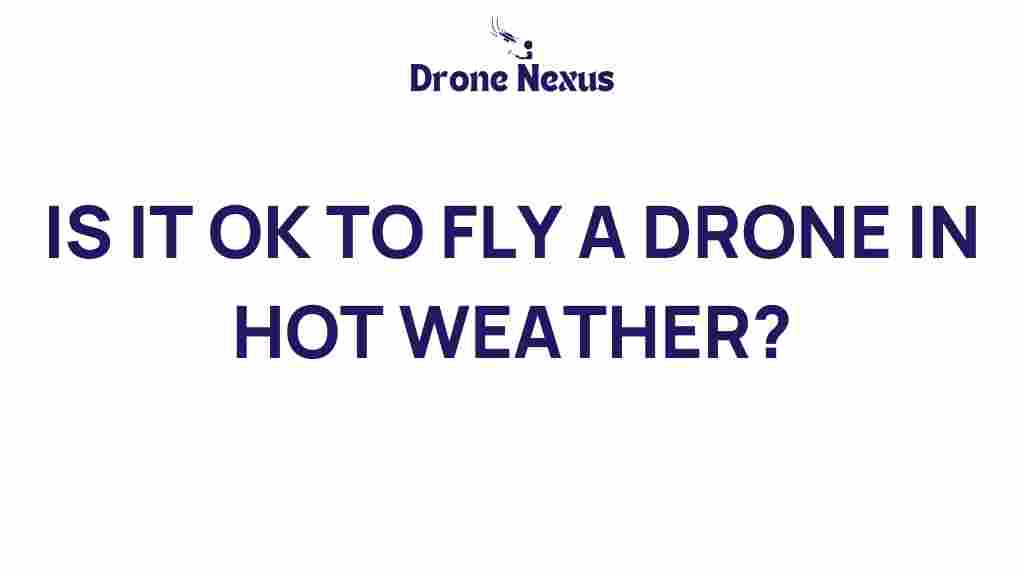Is It Safe to Fly a Drone in Scorching Heat? Understanding Drone Safety
As drone enthusiasts and professionals continue to explore the skies, one question often arises: is it safe to fly a drone in scorching heat? With temperatures rising in many regions, understanding the implications of extreme heat on drone safety becomes crucial. This article will delve into the effects of heat on drone performance, provide a detailed guide on safe flying practices, and offer troubleshooting tips for those who may encounter issues in high temperatures.
The Relationship Between Heat and Drone Performance
Before we dive into the specifics of flying drones in high temperatures, it’s essential to comprehend how heat affects drone performance. Drones, like any other electronic device, have operational limits, and extreme heat can pose several risks:
- Battery Life: High temperatures can significantly affect battery performance. Lithium polymer batteries, commonly used in drones, can degrade faster in the heat, leading to reduced flight time and potential failure.
- Overheating: Drones have built-in safety systems that can automatically shut down the device if it overheats. This can occur when flying in direct sunlight or in temperatures above the manufacturer’s recommended range.
- Motor Performance: The motors in drones can also overheat, which can lead to decreased performance and responsiveness during flight.
Safe Practices for Flying Drones in High Temperatures
To ensure optimal drone safety while flying in scorching heat, follow these best practices:
1. Check Weather Conditions
Always check local weather conditions before flying your drone. Look for temperature highs, humidity levels, and wind conditions. Excessive heat combined with high humidity can exacerbate issues related to battery and motor performance.
2. Monitor Battery Health
Inspect your drone’s battery before each flight:
- Ensure that the battery is not swollen or damaged.
- Fully charge the battery but allow it to cool down after charging before flying.
- Keep spare batteries in a cool environment to prolong their lifespan.
3. Avoid Direct Sunlight
When not in use, keep your drone in the shade or a cool area. Direct sunlight can raise the temperature of both the drone and its components, leading to potential overheating.
4. Fly Early or Late
Consider flying your drone during cooler parts of the day, such as early morning or late evening. This practice not only enhances safety but can also provide better lighting conditions for photography and videography.
5. Limit Flight Time
Reduce your flight time to prevent overheating. Monitor your drone’s performance closely, and be ready to land if it shows signs of distress.
6. Upgrade Firmware
Ensure your drone’s firmware is up to date. Manufacturers often release updates that can improve battery management and performance, particularly in extreme conditions.
Understanding Drone Safety Features
Modern drones come equipped with numerous safety features designed to protect both the drone and the user. Familiarize yourself with these features to enhance drone safety:
- Automatic Return to Home: This feature ensures that the drone returns to the takeoff point when the battery is low or signal is lost, which is especially beneficial in high heat situations.
- Temperature Alerts: Some drones provide alerts when internal temperatures exceed safe limits. Pay attention to these warnings and land immediately if they occur.
- GPS Tracking: GPS technology not only helps in navigation but also aids in keeping track of your drone, especially if it malfunctions due to overheating.
Troubleshooting Tips for High-Temperature Issues
Even with all precautions, you might encounter problems while flying in scorching heat. Here are some troubleshooting tips:
1. Drone Overheats Mid-Flight
If your drone overheats during flight:
- Land the drone immediately in a safe area.
- Allow the drone to cool down before attempting to fly again.
2. Reduced Flight Time
If you notice a significant decrease in flight time:
- Check the battery’s health and ensure it is properly charged.
- Consider replacing older batteries that may no longer hold a charge effectively.
3. Unresponsive Controls
If your drone becomes less responsive:
- Land it as quickly as possible.
- Inspect the motors and propellers for signs of overheating or damage.
4. Inconsistent GPS Signal
If GPS signals are weak or inconsistent:
- Fly in an open area away from tall buildings and heat sources.
- Check for any firmware updates that might improve GPS function.
Conclusion: Prioritizing Drone Safety in Extreme Conditions
In conclusion, flying a drone in scorching heat can be safe if proper precautions are taken. Understanding how heat affects drone performance is key to ensuring drone safety. By following best practices, monitoring your drone’s condition, and being prepared to troubleshoot any issues, you can enjoy a safe flying experience even under the sun’s intense rays.
For more information on drone safety and regulations, check out this FAA drone safety guide. Additionally, for tips on maintaining your drone and ensuring its longevity, visit our maintenance section.
Whether you’re a hobbyist or a professional, always prioritize safety and responsibility when flying your drone—especially in extreme weather conditions. Happy flying!
This article is in the category Safety and created by DroneNexus Team
